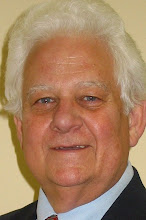 No Toy Value?
No Toy Value?With cutbacks, layoffs and consumer sentiment at all-time lows, the hearing aid practitioner faces two fundamental problems in maintaining, much less growing, store revenues.
The first, and most significant problem, independent retailers face is the slowing of cash flow. First, fewer consumers are buying, consumers that do purchase a pair of hearing aids opt for lower-priced models and, with entry-level hearing aids starting at $1,000 per ear, most prospects are smacked with sticker shock.
“But I see them on TV for $14.95!” Thus begins the lecture on tunable devices and the dangers ALDs present to already damaged hearing. The user-controlled device is tuned to higher and higher volume levels, causing further damage and loss of hearing.
However, even after explaining the importance of tunable hearing aids, many consumers opt for a lower priced ALD. In fact, some retailers don’t carry these ALDs, though some are useful and of decent quality. However, the hearing aid practitioner must explain the proper use of an ALD and point out their potential dangers.
Hearing Aids Are Discretionary
Unfortunately, as the economy contracts and people fear for the security of their jobs and even their homes, hearing aids quickly fall into the “discretionary purchase” category – most certainly after a big-screen, HD flat-screen TV with surround sound. Now that’s got “toy value!”
A hearing aid has no toy value. In fact, most consumers think of them as beige and blah. So, potential consumers learn to “live” with hearing loss. They learn to position themselves to receive visual cues from the speaker and they ask “What?” a lot. Seems like a small price to pay for that HD TV with surround sound.
The point, here, is that the hearing aid practitioner’s marketing shouldn’t target prices and features but quality of life issues. This is what the consumer fails to recognize: loss of hearing is a quality of life issue, but because nerve damage often happens gradually, the individual is able to compensate with adaptive behaviors.
But the sound of the birds, or a grand child’s whisper – these are the quality of life issues that individuals with hearing loss fail to consider when weighing a hearing aid purchase.
Free Demonstrations
Organize and strongly promote a night of free demonstrations with refreshments, hearing aid practitioners available to answer questions and, of course, free hearing evaluations.
Create a celebratory atmosphere and hold these events monthly, using print media and your localized website to keep the events before the prospect.
Be sure to ask visitors to sign the guest book and encourage an appointment for a complete hearing evaluation.
These Ear Parties (avoid calling them seminars – too boring) are terrific opportunities to create interest in the consumer by demonstrating the advancements in hearing technology. As an additional benefit, you’re able to instruct numerous prospects at once – a cost-saver.
Outreach Programs
In these difficult economic times, hearing aid practitioners must find ways to expand services, even in a contracting economy. Often, this can be as simple as creating an outreach program – a service visiting elder care facilities to perform hearing tests, for example.
Or, setting up a table at the local community health fair. It’s important to expand your stores’ presence in a contracting economy. For many hearing aid practitioners, this challenge is actually an opportunity to expand both product and service offerings.
Marketing In Tough Times
The worst thing a small hearing aid practitioner can do in difficult times is cut back on marketing and services. The key to success is to keep the marketing free and services can expand without adding significantly to the operations accounting line in the annual budget.
Contact local service organizations like the Lions Club or Jaycees. These organizations meet monthly and are always eager to find speakers – like you. And you even get a lunch out of the presentation. Not bad.
Teach a short adult education class on hearing, hearing aid technology and the hearing purchase cycle. The course should be offered at no cost and product samples should be a part each class.
Organize a community health fair and solicit other health care providers to offer free evaluations for the good of the community. Any local newspaper would provide free advertising for such an event and the community should offer the use of town facilities. It’s good for the community and good for the medical community in your service area.
Offer financing options. This can be done through the local bank or through a credit line held by the business. It offers the option of providing hearing aids when needed while earning interest on your borrowers – another win-win.
Join the local Chamber of Commerce and Better Business Bureau. These are worthy organizations that also serve to create consumer trust and establish your business as a good member of the local business neighborhood.
Expand after-purchase care service, i.e. free battery swaps. This keeps your client base in tact.
As you expand both your store’s service offerings, products and outreach, you’ll see almost immediate results from these no-cost marketing steps, ideal for a contracting economy and a “discretionary” product.


















No comments:
Post a Comment